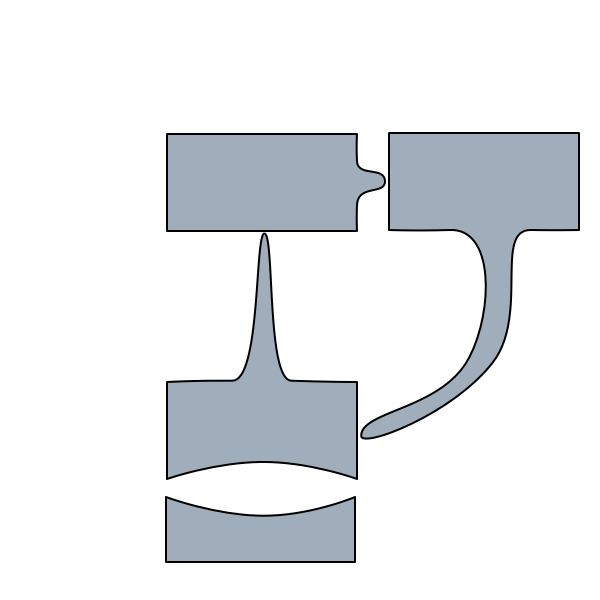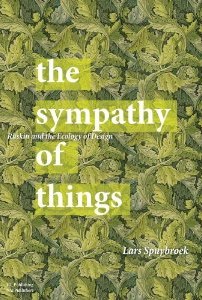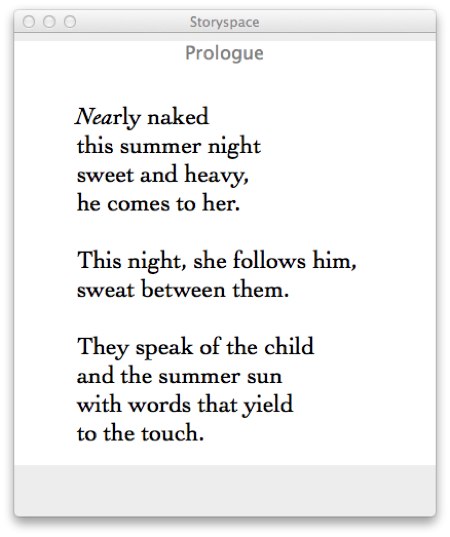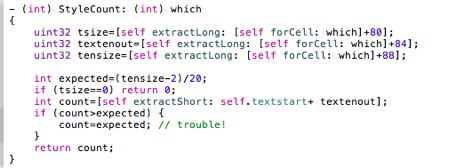It is Friday night dinner again, and the Business Professor asks straight out why anyone would want to bother with hypertext narrative. I handle this question badly in social settings. I understand the underlying family traumas; sorry, Freud, but knowing doesn’t help that much.
It’s time for a fresh tilt at that windmill; here are some thoughts for an introduction to Getting Started With Hypertext Narrative.
Comments and improvements welcome: Email me.
The future of serious writing lies on the computer screen. That future, indeed, is already upon us. We compose on the computers, we read our mail on computers, and increasingly we read our novels and textbooks on computers.
Today, most of what we read is written as if it would be read on paper. We no longer write on paper and we no longer read on paper, yet our computers, our tablets, and our ebook readers simulate paper. Indeed, they go to great lengths to copy the inconveniences of paper, the awkwardness of turning the page, or the arbitrary limits it imposes on our margin notes. Most significantly, we still write books as if they were to be mass-produced by factories, one page forever following another in a fixed and inalterable sequence, one size fits all. We don’t use links much, and we don’t use them wisely.
Hypertext is, simply, writing that uses links; hypertext narrative is telling stories (and histories) that use links. Links let us write in new ways for new audiences. Links should let us tell stories that were once difficult to tell. Though links can sometimes let us alter the story, changing “what happens” in different readings, we more frequently will use links to change the plot, changing “how we explain what happened.”
Why does this matter?
- The audience is ever more diverse, and the fragility of our planet makes reaching our audience ever more critical. We cannot assume that every reader has attended the same schools, read the same books, or will ask the same questions. The work must be ready to provide answers to each reader.
- The importance of writing truly for a diverse audience is clear and pressing in nonfiction, especially when writing to influence public policy for an audience of legislators that ranges from experts to cultivators of ignorance. Fiction, which addresses emotional truth, is not less important.
- Each reader brings to their reading distinct constraints and attitudes. Today, your audience is calm, attentive, and critical. Tomorrow, your audience is agitated, anxious, and eager for distraction. The work must be prepared to satisfy both audiences – especially as they might be the same person. Homer understood this.
- A central lesson of modernism was that artists should exercise tight control in matters that matter, but may relax their grip elsewhere and let the material or the brushstroke show. Links explore a looser approach to narrative.
- Serious reading has always encompassed rereading. Hypertext requires rereading, and makes manifest the way changes in the reader change the work.
These notes explore some lessons we have learned from the first twenty-five years of hypertext narrative.























